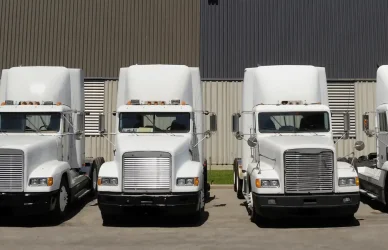A common practice among truck drivers has raised concerns about fuel efficiency and its environmental implications. Leaving engines running during rest breaks, often done for comfort and convenience, has become a contentious issue.
Below, we’ll discuss the reasons behind this practice, its impact on fuel consumption, and the environmental consequences it entails.
The Comfort Factor
Long hours on the road mean that truck drivers often find themselves needing to rest and recharge. Many drivers choose to keep their engines running during breaks to maintain a comfortable cabin temperature, power essential electronics, and ensure safety. While these reasons are understandable, they come at a cost – both in terms of fuel consumption and environmental impact.
Fuel Consumption: A Costly Consequence
Leaving a truck’s engine running might seem like a minor concern, but the cumulative effects are significant. Idling engines consume fuel without contributing to the truck’s actual movement, leading to decreased fuel efficiency. According to studies by the U.S. Department of Energy, a truck can burn up to a gallon of fuel per hour while idling. For an industry that heavily relies on fuel, this practice translates into substantial financial losses.
Environmental Implications
The environmental consequences of truck idling are equally concerning. Carbon dioxide (CO2) emissions, a major contributor to global warming, are released into the atmosphere during idling. In addition, idling engines emit pollutants such as nitrogen oxides (NOx) and particulate matter, which degrade air quality and pose health risks to both drivers and nearby communities.
Mitigating the Impact
Addressing the issue of idling requires a multi-faceted approach that balances driver comfort, operational efficiency, and environmental responsibility.
Idle-Reduction Technologies – Truck manufacturers are increasingly integrating idle-reduction technologies into their vehicles. These systems allow drivers to enjoy a comfortable cabin temperature and access essential electronics without the need to keep the engine running.
Educational Campaigns – Raising awareness among truck drivers about the consequences of idling and providing them with alternatives can lead to positive behavioral changes. Informative campaigns can highlight the benefits of reducing idling, both for their wallets and the environment.
Regulations and Incentives – Government agencies can play a pivotal role by implementing regulations that limit idling duration. Additionally, offering incentives, such as tax breaks or rebates, for trucks equipped with idle-reduction technologies can encourage the adoption of more fuel-efficient practices.
Rest Stop Infrastructure – Investing in rest stop facilities that provide amenities like power hookups for electronics and climate-controlled resting areas can significantly reduce the need for idling.
The practice of semi-truck drivers leaving their engines running during breaks might offer comfort and convenience, but its impact on fuel efficiency and the environment cannot be overlooked. With the trucking industry being a vital component of modern commerce, finding a balance between driver needs and environmental responsibility is crucial. By embracing technological innovations, raising awareness, and investing in infrastructure, we can work toward a more sustainable future for both truck drivers and the planet.











